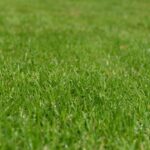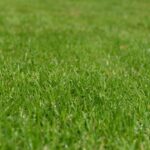The types and number of diseases attacking our tree population are rising amid concern over effective treatment methods. Technology can give landscapers and arborists an early warning that allows them to act before it’s too late. Greg Rhodes reports
As an EU member, the UK enjoyed free trade among the other 27 states although plants and trees introduced from mainland Europe are subject to some level of biological security controls, while larger nurseries reportedly operate a quarantine policy to help prevent alien entities crossing our shores by retaining stock for up to a year before releasing it.
From 1 January 2021, post Brexit, however, the UK will introduce its own regulations, which are planned to further tighten control measures.
But the problem of provenance is a thorny one, notes Dr Matt Elliot, Policy Advocate – Tree Health & Invasives at The Woodland Trust. “Often it’s not known, as once a plant spends more than three weeks in a country, it takes on that country’s origin.” Tracing true origin of an infected specimen may seem a lost cause to some degree.
At risk
The stakes are high for some of the UK’s most treasured tree types. “The Defra UK Risk Register identifies at least 127 high-risk pests and diseases,” Matt continues. And the list is growing.
Matt cites the oak processional moth (OPM) as an example of how alien species can gain access. The OPM caterpillar’s hair can cause an allergic reaction and aggravate conditions such as asthma. “The moth was brought into the UK at the Chelsea Flower Show,” he explains, noting that the onus falls on local councils and landscape contractors to introduce sufficiently rigorous sourcing strategies.

Warmer climate, particularly in southern England, is imposing more stress on trees, leaving them susceptible to attack from invasive species, Matt adds.
Trade bodies such as the Arboricultural Association are playing a key role in the battle to halt the assault by stepping up training courses and formal qualifications to raise professionalism and standards across the sector.
“Anybody can take a chainsaw course,” says Matt, but he adds whether residential, amenity, sport or landscape setting, “responsibility rests with the landowner to ensure trees are safe.”
Intervention and management
Reactive treatments are one thing but “finding problems earlier allows earlier intervention and management”, Matt stresses. That’s when technology can take a hand. “Checking the rate of transport of water, minerals and food in xylem and phloem indicates how healthy the plant is, and this can be measured using specialised technology.” Machines that assess tree health using foliage colour are also coming into force, he adds.

The conversation is moving forward as national bodies such as The Woodland Trust campaign for the Government to introduce fines on landowners if they failto tackle trees deemed dangerous to the public. There’s no legal requirement in place yet but watch this space.
“All our London offices report problems with OPM,” he says. Introduced accidentally into the capital in 2005, its caterpillars can cause rashes and respiratory issues. The pine processionary moth meanwhile causes even greater foliar damage, he states.
Some pests have taken such a grip in the UK that Jon considers them literally part of the landscape – honey fungus, for example, which damages roots, is “essentially endemic” now.
Tree health can depend on other factors too, he maintains. “Awareness of the importance of planting and growing trees is mounting in the UK and I’m hopeful that UK production will increase, despite our limited available land space.” That’s perhaps one reason why more growers are choosing smaller species.
However, faster-growing species can have poorer root structure and can break up structurally over time, Jon notes.
Right tree for right place
Despite the growing emphasis on planting indigenous species, non-native trees are not necessarily bad, Jon argues. “Rather it’s important to select the right tree for the right place”, bearing in mind factors such as drought resistance, high or low pH and soil condition.
Sound scientific knowledge among landscape contractors and arborists will help this process. Soil samples are critical before taking any action, he says, to determine micro and macro nutrient levels, together with an assessment of crown structure and tree girth to determine how the tree is going to look in the years ahead.
Tolerance lists for honey fungus identify species resisting its effects. “A study of the trees surrounding the location will tell you those that like the local soil environment.
“Identifying tree pathogens from soil sampling is difficult however,” he continues, “but the world of big data has helped increase knowledge of epidemiology – that of ash dieback for example – proving that
the disease originated from wind-blown spores predominantly rather than from imported trees.”
The troubling rise in alien pests persists though. “Bacterial leaf scorch – Xylella fastidiosa – is a hot new disease. We are monitoring signs for it in the UK as it has not arrived here yet. The disease vector is the spittle bug and we are urgently checking its distribution as the bug has a huge host range.”
Maintaining tree health nationally is important as trees increasingly form part of the solution to water management in the UK. “Communities are realising how key they are in the urban environment. Careful planting can help deliver sustainable drainage, mitigating the impact of storm water.”
Technology to fight against disease
Technology is already aiding the fight against disease. “Electrostatic sprayers mounted on pick-ups are useful for treating OPM,” Jon explains. They deliver better rates of spray and more closely target treatment liquids. “The same substance but in low volume and high concentration with tighter focusing – less time- consuming too.”
Reduction in the chemical armoury still on the permitted list does tie our hands but developing the tree’s induced systemic resistance helps, he adds.
Systemic insecticides can be applied to kill pests – the emerald ash borer beetle for example – but only as emergency products used in a restricted area to control an outbreak.
Ultra low volume sprayers come in handy for small- scale in-house testing, Jon explains. “All our offices have one.”
Tree stem injection technology is moving ahead. Research is underway with a major stakeholder using a fertiliser product that kick-starts the immune system.
“One process uses a blade to cut into the tree stem then apply the product. It’s a natural way to treat and the holes heal quickly,” Jon reports.
But, cautions Jon adds, “injecting a tree badly is all too easy. Training schedules can help operators to understand sap flow and perform the task correctly.”
Inspecting the canopy
Traditional ways to inspect tree upper reaches are giving way to less invasive methods such as drones, Jon continues. Climbing inspections require ropes, which rub against the bark and can cause cankers, allowing disease to set in.
“The Forestry Commission use them across large estates in North Wales and Scotland. We have tested them but our experience is that they didn’t allow us to see enough of the canopy or the tree’s interior branches but they give a fantastic perspective on tree contours. Operators need a commercial drone licence to use them.”

Thermal imaging is appearing in the tree health picture by using infrared to record the colour of the leaf surface. “The technology has the potential to be extremely useful,” Jon predicts. “Trees do not have a uniform structure and we found in tests that IR gives a comparative picture of whether they are well or unwell.
The fluorescence usually occurs in the longer wavelength red/far-red regions and can act as an indicator of the stress the tree is under – from either environmental or disease factors.
Bartletts undertook a listening project last year to test audiology on a tree in Nottingham. A sensor fitted into the trunk recorded sap flow. “It’s simple to use – a kind of modified hyperdermic needle drilled the sensor into the bark then recorded flow data.”
But the scope of research into and collaboration on tree diseases is going global. An international link-up is pooling knowledge about bacterial leaf scorch, so serious is the threat.
The Bartlett Tree Research Laboratory acts as a research, training and learning resource for employees and customers nationally and internationally – perhapsone indicator that the fight against invasive tree pests has to be fought beyond national boundaries.
Picture credit main image: Gareth Harrier

